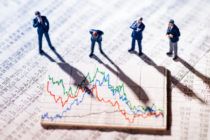Sustainable Finance Disclosure Regulation (SFDR), the regulation designed to shake up the sustainable investing landscape in the EU, is one month old. But is it achieving its purpose, or becoming 50 shades of green as asset managers try to interpret it?
The theory is that, for individual investors/financial advisers, comparisons become easier because, as its name suggests, the SFDR requires asset managers to disclose the levels of sustainability inherent in their investment products.
This aims to enable end investors to assess whether a fund is truly sustainable, or whether the asset manager is indulging in greenwashing – only paying lip service to sustainability with a few token gestures.
Shades of green
French asset manager Carmignac believes segregating fund ranges by shades of “green” has probably been the most difficult of operations for most asset managers.
The ESG alphabet soup now includes numbers – the SFDR fund categories: Article 6, Article 8 and Article 9.
Kenneth Robertson, client portfolio manager – sustainable investing at Robeco, explains that the classification system and the transparency it requires does provide some distinction between those funds which integrate sustainability and those which don’t.
However, each manager’s classification of its funds is the result of a self-assessment and there is still variation in how different managers have classified their funds.
Robertson elaborates: “Whilst one of the keys aims of SFDR is to prevent greenwashing, it’s valuable for clients to know that many different shades of green still exist, even within a single classification.
“In our case, for example, both our ESG-integrated (regular) strategies and our sustainable strategies are categorised as Article 8. It’s important, therefore, to be wary of looking just at a label, without understanding what’s going on underneath the surface. Read the actual disclosures and keep asking questions to your managers and expect answers.”
Lacking clarity
Arjan Ruijs, senior responsible investment officer at Actiam, insists it is no surprise that there are many different shades of green and to a large extent this will always remain the case.
“There is no single definition of ‘sustainability’ that is fixed. It is time and location specific which elements of sustainability are deemed more or less important.”
He adds: “In the 1970s contribution to acid rain was an important component of sustainable development, as that was one of the challenges threatening our society at that moment and therefore also a topic for investors. The major problem causing acid rain has been solved now, but now climate change is the major topic.”
Ruijs says it is not necessarily bad that there is no single definition of which investments are sustainable or not, as long as it is clear which definition of sustainability is used and how investment choices depend on this definition.
“We must be open how we look at sustainability, which sustainability-related targets we adopt, and how we intend to reach them.
It’s up to the clients to decide whether they deem that to be sufficient. The idea of the SFDR is that we can prove with data what we do, such that clients can monitor whether we live up to expectations.”
He adds that, by being open, greenwashing should become more difficult. However, he insists that any success depends on clients learning more about sustainability and which questions to raise to be able to judge whether a fund corresponds with its preferences.
Initial thoughts?
So, has the SFDR made the impact expected, one month after it was launched? According to Robertson, the short answer is ‘not yet’.
“Its debut has been 50 shades of green rather than the holy grail that some had hoped for. But it does provide clients with the right tools to ask tough questions before they ask an asset manager to invest on their behalf.”
He adds: “Whilst the classification system and the transparency it requires does provide some distinction between those funds which integrate sustainability and those which don’t, the differing implementation by managers still needs to be aligned.”
Ruijs believes it is too early to say whether it has shaken up the sustainable investing landscape. “The majority of the investors may have adapted their precontractual reporting and there may be more clarity about the categorisation, but it takes time before it becomes clear how clients value the information and base their decisions on the extra disclosures”.
Arrival of Level 2
Robinson argues that moving from the assessment regulations in Level 1 to the more complex requirements of Level 2 should lift some of the fog.
Additional clarity has been incorporated in the Level 2 regulations, which should raise the requirements for classifying a fund as Article 8 or 9.
The introduction of Level 2 has been delayed but is expected now to happen in January 2022.
Ruijs thinks Level 2 will probably make greenwashing harder, but it might also make it more difficult for asset owners to separate the good from the bad funds.
“The required level of detail is quite high, making it more difficult to weigh how all elements disclosed relate to one another. But the extra level of detail has two positive sides.
“On the one hand, if the investors have their data well organised, they can better integrate the sustainability data in their decision making and better see the materiality of the sustainability topics, hopefully leading to more sustainable choices. “
He adds: “On the other hand, if clients can compare this information from multiple investors, they are in a better position to decide which elements of sustainability they find most relevant. By disclosing more information, it becomes evident that sustainability is not a single-theme topic, but has many aspects.”







